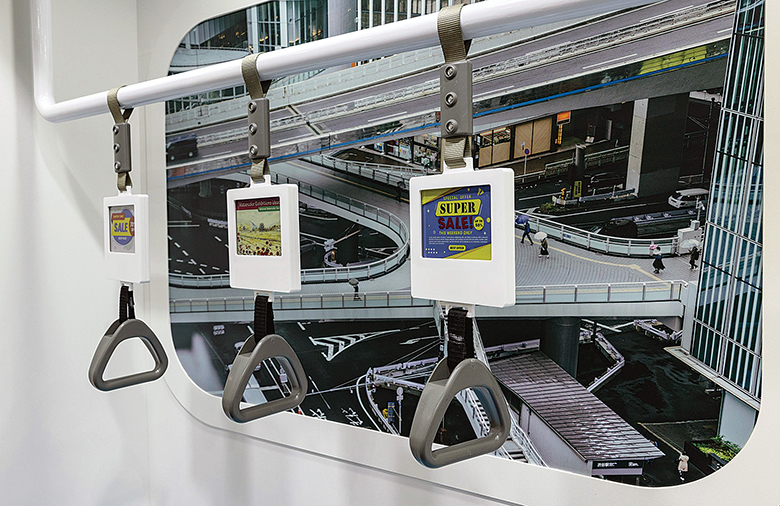
E Ink Corporation, the world-renowned developer of ePaper technology, and leading transit technology experts Luminator Technology Group are working together to bring a dynamic low-power display solution to the North American transit industry.
With a global headquarters in Taiwan and a U.S. base in Billerica, Massachusetts, E Ink produces a unique kind of digital display. E Ink’s two-particle electronic ink system is made up of millions of tiny microcapsules, each about the diameter of a human hair. Each microcapsule contains negatively charged white particles and positively charged black particles suspended in a clear fluid. When a positive or negative electric field is applied, corresponding particles move to the top of the microcapsule where they become visible to the viewer. This makes the surface appear white or black at that spot. These particles hold their place without consuming any power. In short, the company has developed an efficient signage solution that is extremely low on power consumption.
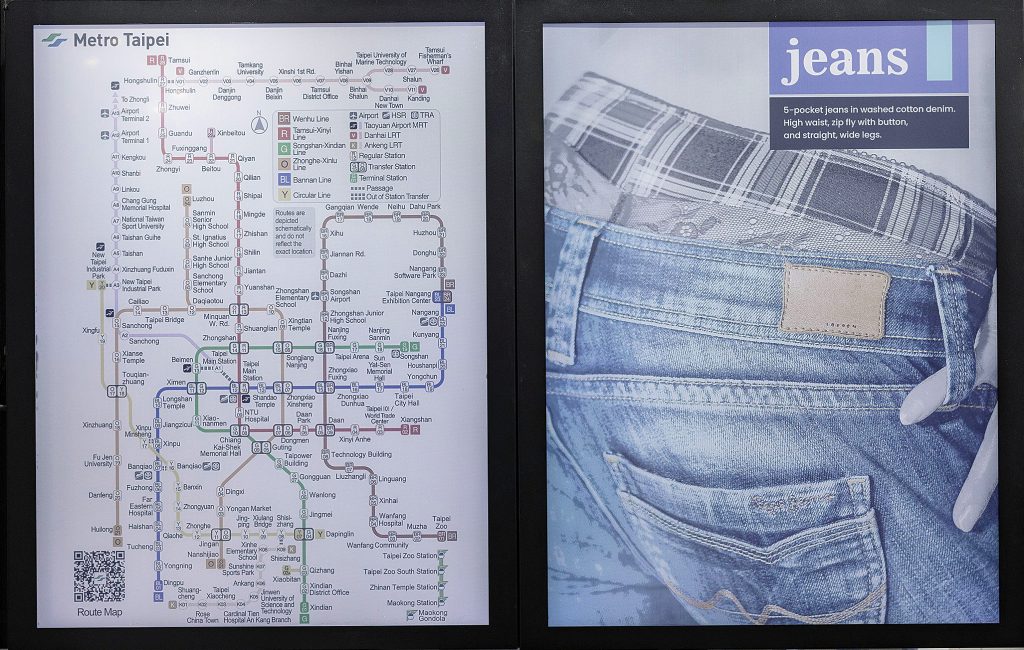
42-inch E Ink Kaleido 3
“The unique thing about E Ink’s ePaper is that you only need power to move the particles up and down,” said Jonathan Margalit, PhD, senior business development manager for E Ink. “Once they reach their position, no power is consumed. If you have an ePaper sign that updates once an hour, it consumes absolutely no power for the remaining 59 minutes and 59 seconds.”
This translates to numerous advantages for transit displays. Because it is a reflective technology, it does not emit any light – making it easy on the eyes and readable in high sunlight. It is physically paper-like and allows for a very wide viewing angle.
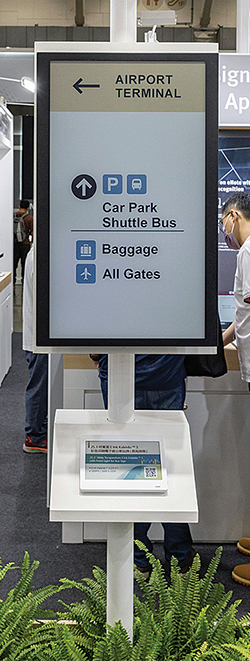 “And it’s always on,” Margalit said. “You can unplug an ePaper sign and it will still show the last image that was loaded by the agency.”
“And it’s always on,” Margalit said. “You can unplug an ePaper sign and it will still show the last image that was loaded by the agency.”
While ePaper is somewhat of a generic term, E Ink’s proprietary technology is referred to as electrophoretic ePaper. The differentiating factor is that E Ink’s ePaper is bistable, meaning that it only uses power to change an image – but uses no power to maintain that image.
“It provides the potential for tremendous energy savings,” Margalit said. “Because sustainability is so important in public transportation, these energy savings can translate into achievable sustainability goals. It can be powered by a simple solar panel, and it is flexible for agencies that want to place signage away from the power grid. It generates zero light pollution, and also provides uninterrupted communication in case of a power outage.”
E Ink paired with Luminator Technology Group, a worldwide leader in technology solutions that enhance and improve intelligence, safety, and efficiency for public transit. E Ink saw Luminator as the perfect partner, thanks to its hardware, software, electronic, and weatherproofing expertise.
Luminator worked closely with E Ink to develop a rugged ePaper system for outdoor applications, to pair with its existing information and infotainment solutions such as INFOtransit.
“The ePaper displays are as crisp and as concise as reading on paper, but it’s put into a display that has the ability to change images,” said Dan Kelleher, vice president of business development at Luminator. “It allows agencies to provide real-time information on these displays – and not just basic arrival information, but also real-time weather alerts and emergency announcements.”
Luminator has evolved as a company by taking its various types of display technologies and moving them toward one software platform. The Luminator Software Suite integrates destination signs, E Ink technology and stationary products, as well as INFOtransit technology into a single platform. The goal is to provide transit agencies with user-friendly, intuitive tools, in which single-sourced information can be distributed to multiple assets throughout a transit system.
E Ink offers several sizes of reliable, durable displays that work well for outdoor applications, able to withstand extreme temperatures and ultraviolet exposure. Luminator designs a package for display technology that can mount and withstand everything from weather elements to vandalism. ePaper is different from LED technology, so replacing LED with ePaper is not a 1:1 comparison. It requires Luminator’s skill in tandem with E Ink to determine the requirements to power each panel.
Expanding the US Market
The displays are manufactured at Luminator’s North American factory in Plano, Texas, to meet Buy America standards, integrating European standards and applying knowledge gained from global ridership patterns for the benefit of North American customers.
“As our systems evolve, and as we work with various Luminator operations globally, we recognize that in each market there are certain nuances or requirements, both technical and sometimes just in standard engineering practices, that you want to be able to migrate into one platform – and that’s what we’re currently developing with the Luminator Software Suite,” Kelleher said. “This is a global platform that addresses some of the legacy systems operating in different countries that might’ve been more independent.”
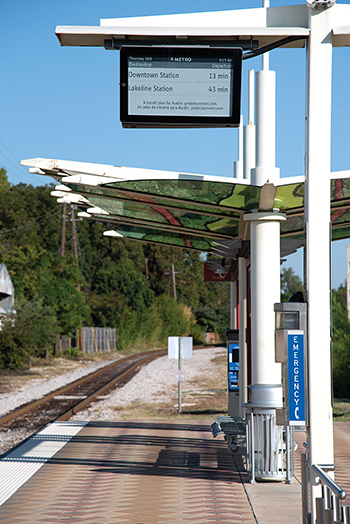
Luminator and E Ink worked together to bring display pilot programs to North American agencies, first to Washington Metropolitan Area Transit Authority (WMATA) in Washington, D.C.
They also worked with Capital Metropolitan Transit Authority (Capital Metro) in Austin, Texas, on a large proposal for 13-inch and 32-inch displays. In January 2020, Capital Metro began installation of over 148 ePaper displays — both solar and traditionally powered — at bus stops, park and rides, light rail stations and remote stops. These displays proved invaluable during the COVID-19 pandemic, and this ePaper installation is the largest single installation of its kind in North America.
In both cases, deployment of solar-powered displays provides transit agencies extra flexibility to reach remote areas and access a wider audience in times of crises. Because the ePaper displays can be updated remotely, agencies are able to push automatic updates and ensure rider access to up-to-date information while reducing labor costs associated with manually switching out paper displays. As passengers enter a vehicle or wait at a bus stop, agencies can push real-time information out to specific displays, alerting passengers to emergencies or simply providing information relevant to their route.
Furthermore, Luminator and E Ink are expanding their offerings with color displays that can be utilized on board zero-emissions buses. With the extra concern of conserving power onboard an electric bus, the E Ink low-power solution is a perfect fit.
Management of the displays can be coordinated through Luminator‘s software suite content management platform which means that agencies can monitor display status throughout the fleet and update content on one or multiple displays as needed.
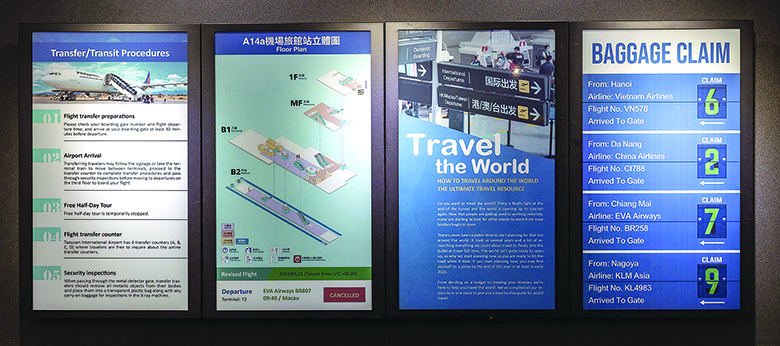
Four 42-inch E Ink Kaleido 3 displays
“In a given station or onboard a bus, transit agencies will have both LED displays and ePaper signage,” said Brian Bigler, global senior brand manager, marketing, at E Ink. “So, for these agencies, Luminator provides an incredible value proposition. If an agency wants to combine both technologies, Luminator and E Ink can provide the necessary solutions to do just that.”
In many cases, agencies will be migrating passenger information from existing paper displays to ePaper displays, or a combination of LED and ePaper displays. These agencies, by migrating from a non-digital solution to a digital solution, will yield the added benefits of real-time information and interactivity – while also saving on manpower and printing costs. “Some cities are still using paper schedules, and the problem is that they only go out and replace them on a monthly interval, when there’s schedule changes almost every day in some systems,” Kelleher said.
“The fact that communities can push out messaging, or emergency information, at any time, is invaluable,” Bigler said. “In the event of an emergency or natural disaster where power is disrupted, the E Ink ePaper’s bistability means it will continue to display the last image. In the case of an earthquake, for example, agencies can program the ePaper to automatically change to show emergency evacuation routes until power is restored.”
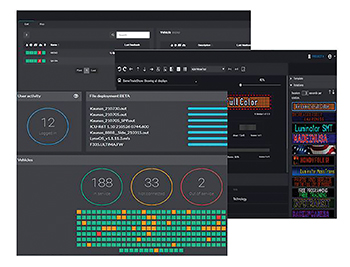
Moving Toward the Smart City
Both Luminator and E Ink agree that technologies like ePaper are key toward developing the concept of the “smart city,” in which transportation is a critical factor. Turning the bus stop into a mobility hub, where transit is interconnected with last-mile services to create a seamless transportation experience for riders.
“I think we’re affecting smart cities because of the ease to install this equipment, and provide it in various locations with no power, without sacrificing readability,” Kelleher said. “It contributes to the vision of why the smart city menu is growing for different features.”
Ultimately, E Ink and Luminator are seeing increased demand for ePaper solutions in agencies that are sensitive to power consumption and the benefits of renewable energy, passenger information, and leveraging Luminator’s software suite’s ease of use. Because of its reflective makeup, ePaper is the only digital display technology that is Dark Sky certified, according to E Ink.
“Solar-energy driven devices are a huge plus for cities looking to conserve power, and the ease of deployment allows for rapid implementation without disturbing infrastructure,” Kelleher said. “We’ve also seen decreased passenger anxiety thanks to the readable, real-time information.”
“There are definitely distinctions in the market for agencies seeking LED or ePaper,” he continued, “but E Ink technology is becoming increasingly more preferred by our clients in public transportation. It’s a rising tide, where more and more agencies are looking to implement this technology than ever before.”
